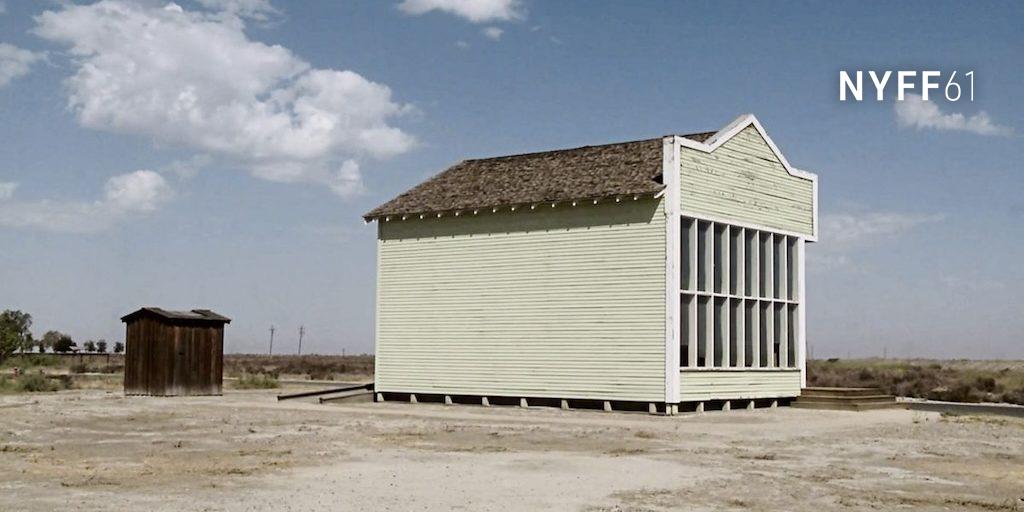In the film Allensworth the audience will find themselves as a translator of dystopian cards, not apocalyptic but terrifying and empty, whose insides and outsides are images that also constitute the dialectics of division. The geometry of such dialectics will dazzle because of its disquieting perspective when applied in a metaphorical terrain.
In his film Allensworth, James Benning introduces himself into that universe of spatial and metaphorical geometry to show through twelve seasons the solitude and emptiness of an almost abandoned town that is currently populated by 531 inhabitants. Although in its origins it was the first city in California, founded by Colonel Allensworth in 1908 in Tulare County, financed and governed by African-Americans. Currently, its residents are a mix of white, Asian, African-American and Latinos spread across a vast, dusty and barren territory.
In twelve scenes shot over the course of a year that play out like picture cards lasting little more than five minutes, James Benning tells the story of this mysterious ghost town with scattered houses, unattached from contemporary reality. Little by little, the city was abandoned after World War I, also known as The Great War.
The choice of format was not by chance, since it exports a historical construction that excludes the diachronic order of the original history. It recurs to a simultaneity of images and tempos that are rooted in the ideological stratum of the fight between whites and African-Americans.
Diegetic music is used to point out the inequality and prejudices in some sort of collage which intermingles gusts of wind with a concert of birds, the wailing of a train’s horn and the passing of some vehicles visualized in an oblique and distant shot. Amidst that concert, performed by a dehumanized nature, the voice of Nina Simone sounds from afar singing Blackbird and later on, the very emotive In the Pines by Lead Bell, both exponents of classical black music and, at the same time, indirect insinuations to the tradition of a rural territory, whose vast immensity creates an invisible space that the audience can however inhabitate.
The image of a lone tree, almost leafless, amidst a winter landscape starts the retelling about the journey the audience is going to make about a series of modest unfamiliar buildings or houses made out of wood or sheet metal, a stable and a cemetery with a single tombstone bearing the name of Anna Pierson (July 1882 – April 1926) which reminds that who inhabits that grave, with frayed or fallen crosses, forms a spectral board where no one exists to be associated with hope or wishful thinking.
Another scene takes the month of August, which usually marks the beginning of the school year. The camera is set in a classroom, facing a chalkboard, where a black girl (Faith Johnson) recites several poems by Lucille Clifton, dressed exactly like activist Elizabeth Eckford, one of the Little Rock Nine, who had the audacity of attending a white-only school in Arkansas.
Allensworth is not just an experimental documentary which we would include within the world of geobiology, but upon deeper analysis we discover a political backdrop that shows through Clifton’s deep poetry which openly describes James Benning’s goal in Allensworth: to represent the forgotten microhistory of black adversity and experience in gaining a foothold in the fight for their rights by using metaphorical denaturalized images featuring a single human presence.
Allensworth is not an easy film to watch and James Benning is not an accessible director to comprehend, but the experience of seeing this film allows for a deeper reflection on what will be left in the world if it continues to endure a continuous war.
![]()
Director: James Benning. Runtime: 65 minutes.













